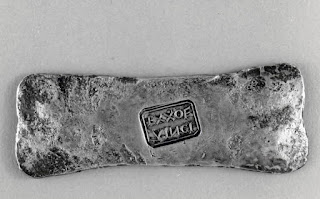Grenoble Archaeological Museum | Carving of a Bishop

< Back to Table of Contents I recently posted about a rather wonderful collection of Romanesque capitals from Saint-Laurent. They are gorgeous pieces, demonstrating the very best of the craftsman’s art. They, like this little carving of an abbot or bishop, date to the 12th century, but the two couldn’t be more different. This figure, holding a crook in his right hand, is remarkably crude and inelegantly executed by comparison … but it is endlessly charming and I love it anyway! He was discovered in 1851 set into the east end of the church. Later in the same century the carving was repurposed as a modillion (or cornice bracket). Thankfully, the decision was made to create a replica and this delicate carving was brought indoors in 1997.


